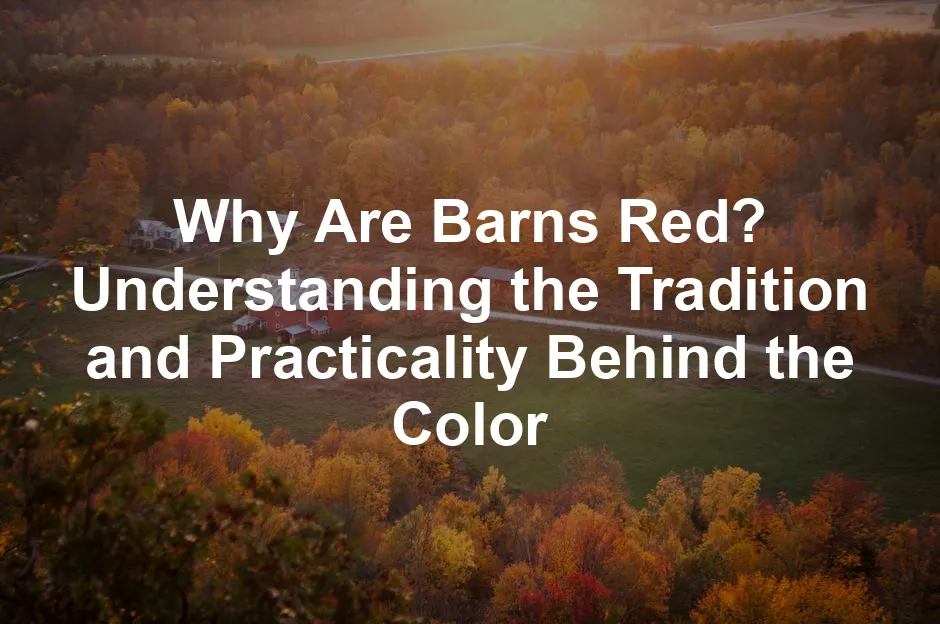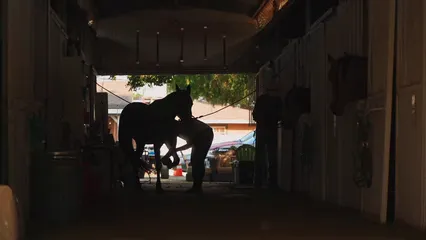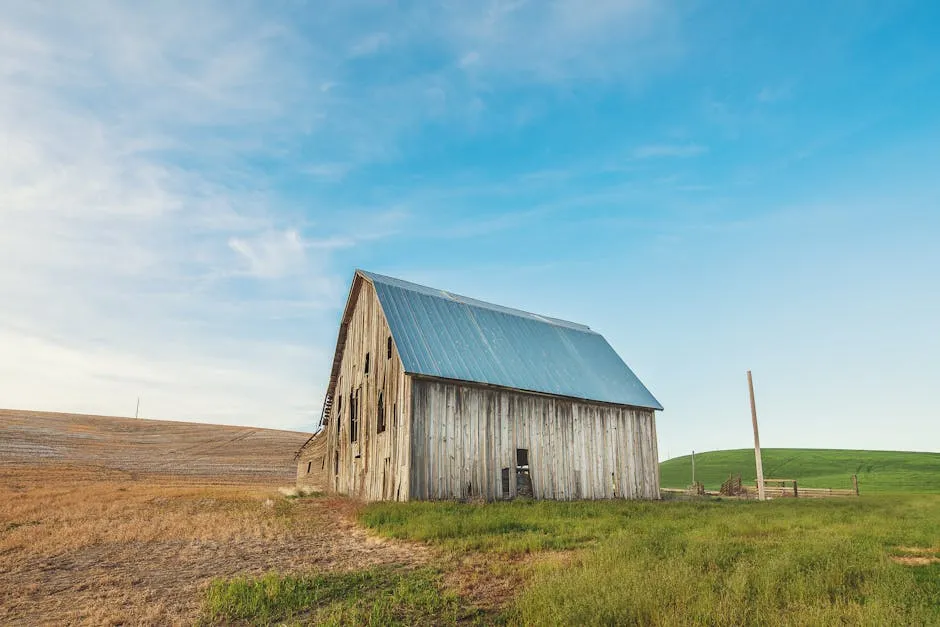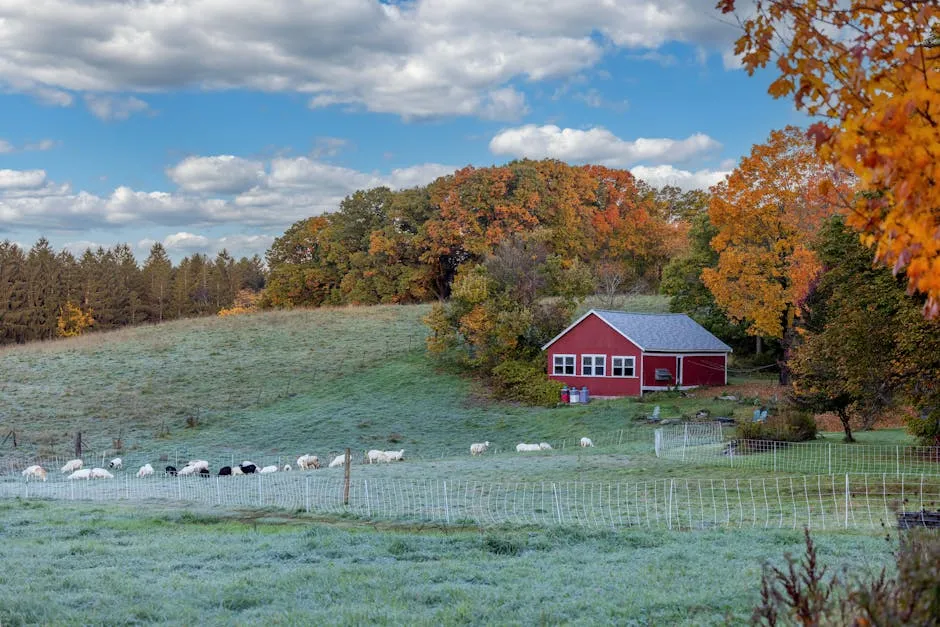
Why Are Barns Red? Understanding the Tradition and Practicality Behind the Color
Introduction
Red barns hold a special place in rural America. They symbolize tradition and practical farming methods. This article explores the reasons behind the longstanding tradition of painting barns red, from historical roots to practical benefits.
Summary and Overview
The history of barn colors in America dates back to the 1700s. Initially, barns were left unpainted, exposing wood to harsh weather. Early settlers borrowed techniques from European farmers, using protective sealants made from linseed oil, milk, and rust. This mixture not only preserved the wood but also created the signature red hue.
Culturally, red barns represent the aesthetic of rural life. They stand out against the greenery of fields and the white of farmhouses, creating picturesque landscapes. Various theories exist about why red became the preferred color, including its availability and affordability. Over time, barn colors evolved, with red remaining a popular choice even as other colors emerged.

The Historical Context of Red Barns
The Origin of Red Barns
The tradition of painting barns red in America began in the 1700s. Early American settlers faced harsh weather and needed a way to protect their wooden structures. They borrowed techniques from European farmers, who often used linseed oil to seal their barns. This oil was mixed with other ingredients, such as milk and lime, creating a protective coating. Initially, many barns were left unpainted, which made them vulnerable to decay. As time passed, farmers recognized the need for paint to preserve their barns. Thus, the shift from unpainted to painted barns became necessary, leading to the iconic red hue we associate with rural America today.
The Traditional Recipe for Barn Paint
Early barn paint was made from simple, accessible ingredients. Farmers typically mixed linseed oil, milk, lime, and rust to create a protective sealant. Milk paint added a binding property, while lime helped with drying. Rust, or iron oxide, provided the distinctive red color. This rust also had antifungal properties, protecting the wood from mold and moss. The resulting paint was not only affordable but also effective in preserving the barn’s structure. This homemade mixture became a practical solution that farmers embraced, ensuring that red barns became a staple of the American landscape.

Practical Reasons for Painting Barns Red
Protection Against the Elements
Painting barns red offers vital protection against the elements. The paint acts as a barrier, shielding the wood from decay caused by moisture and harsh weather conditions. Over time, untreated wood can rot, leading to costly repairs. Iron oxide, a key ingredient in red paint, plays a crucial role in this protection. It inhibits the growth of mold and moss, which can trap moisture and accelerate decay. By using red paint, farmers not only enhance their barns’ appearance but also extend their lifespan significantly. This practical approach to barn maintenance has kept red barns standing strong across America for generations.
Cost-Effectiveness of Red Paint
Why are barns painted red? One significant reason is cost-effectiveness. Historically, red paint was the most affordable option available to farmers. In the 1800s, red paint often came from a mixture of linseed oil and iron oxide, commonly known as rust. This made it both cheap and easy to produce.
Compared to other colors, red paint was more economical. For instance, while red paint could cost around $1.43 per gallon, other colors often reached $2.25 or more. This price difference made red the go-to choice for budget-conscious farmers. As a result, the trend of red barns became ingrained in American agricultural culture.

Red Barns as a Symbol of American Agriculture
Red barns have become iconic symbols of American agriculture. They represent the heart of rural life and farming culture. For many, these barns evoke nostalgia and a sense of connection to simpler times. They stand as monuments to hard work, community, and the agricultural heritage that shaped America.
In art and photography, red barns frequently appear as subjects that capture the essence of rural landscapes. They are often featured in literature as symbols of tradition and resilience. Their presence in cultural representations highlights their significance beyond mere structures. Red barns are woven into the fabric of American identity and storytelling.

The Aesthetic Appeal of Red Barns
Red barns offer a striking contrast to traditional white farmhouses. This bold color creates a visually pleasing balance in rural landscapes. The vivid red pops against the lush green fields and blue skies, making for picturesque scenery.
These barns not only serve a practical purpose but also enhance the beauty of the countryside. Their iconic look has made them a popular subject in photography and art, symbolizing the charm of rural living. The aesthetic appeal of red barns continues to captivate and inspire, making them a beloved feature of the American landscape.

Evolution of Barn Colors
The Shift from Red to Other Colors
Over the years, barn colors have diversified significantly. While red remains iconic, other colors like white, green, and yellow have emerged, each with its own meaning. White barns, for instance, symbolize cleanliness and order. They often reflect a sense of tradition and can also help keep interiors cooler during summer. Green barns are often associated with the agricultural countryside, blending beautifully with the landscape. In some regions, yellow signifies warmth and cheerfulness, adding a vibrant touch to the rural scene.
These color choices reflect broader changes in agricultural practices and regional preferences. As farming evolved, so did the aesthetics of barns. Farmers began to express their individuality and preferences through color, moving away from the classic red. This shift mirrored advancements in paint technology and the desire for unique expressions in rural architecture.

Modern Trends in Barn Colors
Today, barn colors reflect a blend of tradition and modernization. While many still embrace red, others opt for bold hues like deep blues and earthy greens. The use of metal barns is also on the rise, often featuring sleek designs and unconventional colors. These modern barns may resemble warehouses, straying from the classic red imagery.
This shift allows for personal expression, with homeowners using colors that resonate with their style. The trend also includes creative designs, such as murals or two-tone schemes that incorporate traditional colors in new ways. This evolution showcases a balance between honoring tradition and embracing contemporary design trends in rural architecture.

Conclusion
The tradition of red barns has deep roots in American agriculture. Their vibrant color symbolizes practicality, protection, and heritage. While other colors have gained popularity, red barns continue to represent the essence of rural life. They stand as a testament to the history and culture that shaped America’s farming landscape. As we move forward, red barns retain their charm and significance in contemporary rural life, reminding us of the enduring legacy of farming traditions.

FAQs
Why are barns traditionally painted red?
Barns are often painted red for practical reasons. Early American farmers needed to protect their wooden structures from harsh weather. They adopted techniques from European settlers who used linseed oil to seal the wood. By adding rust or blood to this mixture, they created a protective red paint. This red hue not only preserved the wood but also became a cultural symbol of rural life. As red paint became the most affordable option, it solidified its place in tradition.
What ingredients were used in early barn paint?
Early barn paint consisted of simple, accessible ingredients. Farmers typically mixed linseed oil, skim milk, lime, and rust. Linseed oil provided a durable base that sealed the wood. Milk served as a binder, enhancing adhesion. Lime helped the paint dry quickly, while rust contributed to the distinctive red color. This combination not only protected the wood but also made the paint affordable and easy to produce, ensuring its widespread use among farmers.
Are all barns painted red?
Not all barns are painted red. While red is the most iconic color, barns come in various shades. For instance, white barns symbolize cleanliness and order, reflecting traditional aesthetics. Green barns often blend into the countryside, highlighting agricultural practices. In some regions, yellow barns convey warmth and cheerfulness. Each color choice can signify different meanings, influenced by local culture and farming traditions, showcasing the diversity of rural architecture.
How did the color of barns evolve over time?
The color of barns has evolved significantly since the 1700s. Initially, many barns were unpainted, leaving wood vulnerable to decay. As farmers sought better protection, red paint gained popularity for its affordability and effectiveness. Over time, the introduction of commercial paints led to a wider color palette. While red remains prevalent, modern trends have seen barns painted in various colors, reflecting personal style and regional preferences, blending tradition with contemporary design.
What are some other common barn colors and their significance?
Besides red, barns can be found in many other colors, each with its own significance. White barns often symbolize purity and simplicity, reflecting traditional aesthetics. Green barns are associated with harmony and nature, blending seamlessly into rural landscapes. Black barns were historically used for their heat-absorbing properties, preventing wood rot. Each color choice tells a story about the barn’s purpose, the owner’s preferences, and the cultural context of the region, enriching the narrative of rural architecture.
As you explore the charm of barn life, consider adding some rustic touches to your home. Check out these Farmhouse Decor items that can bring that cozy feel to any space!
Please let us know what you think about our content by leaving a comment down below!
Thank you for reading till here 🙂 And remember, if you’re feeling crafty, check out these DIY Barn Project Kits for a fun weekend activity!
All images from Pexels




